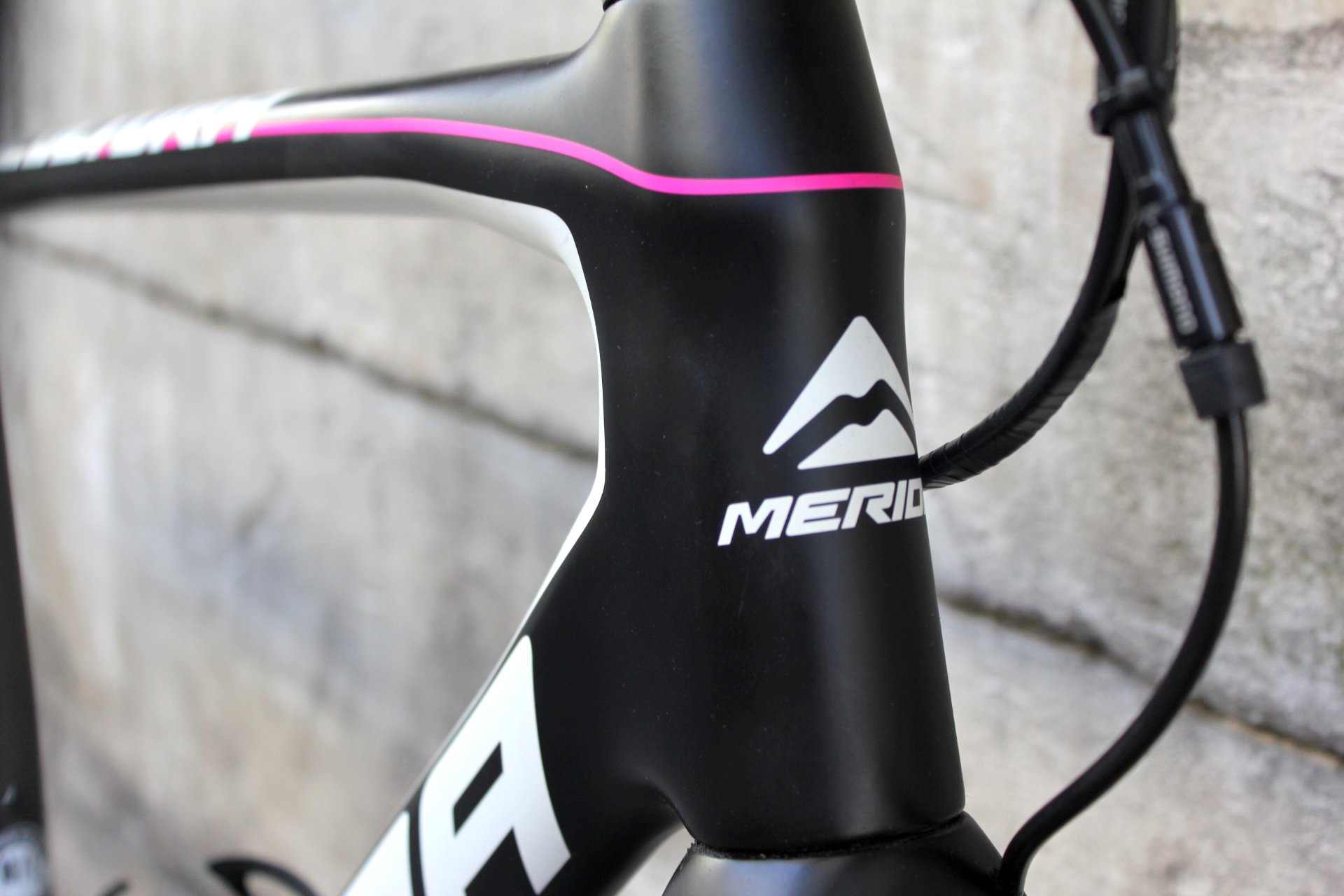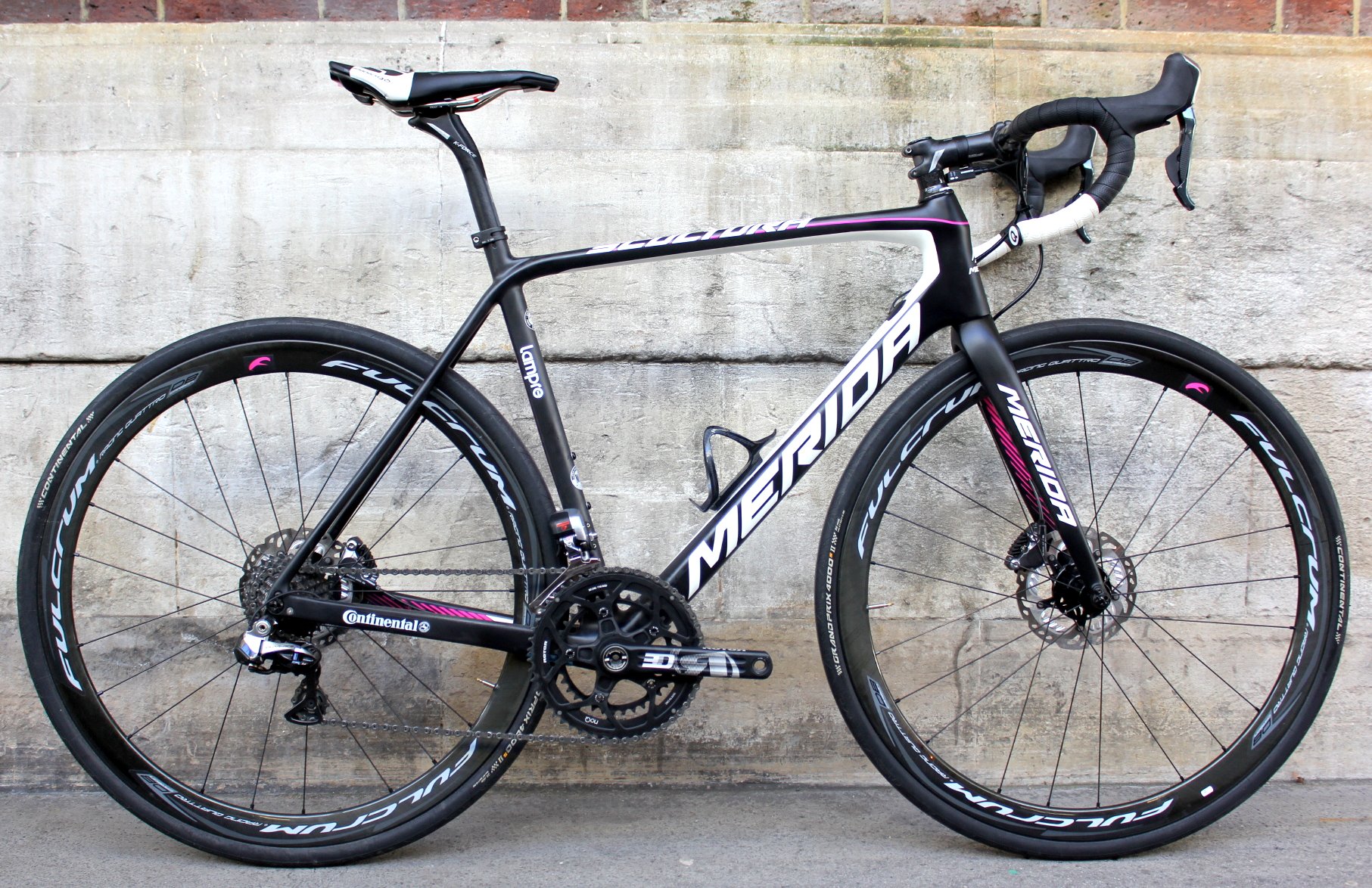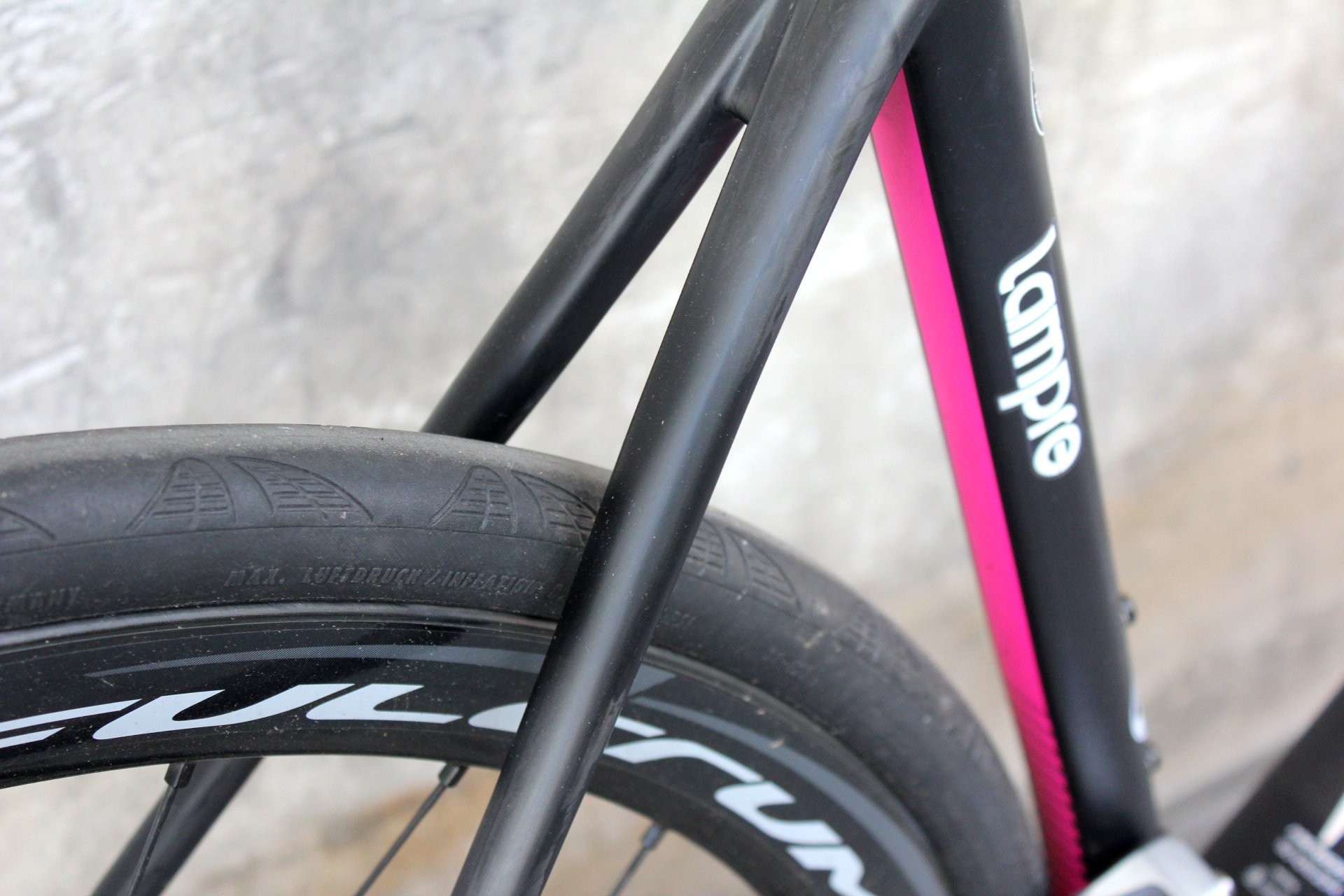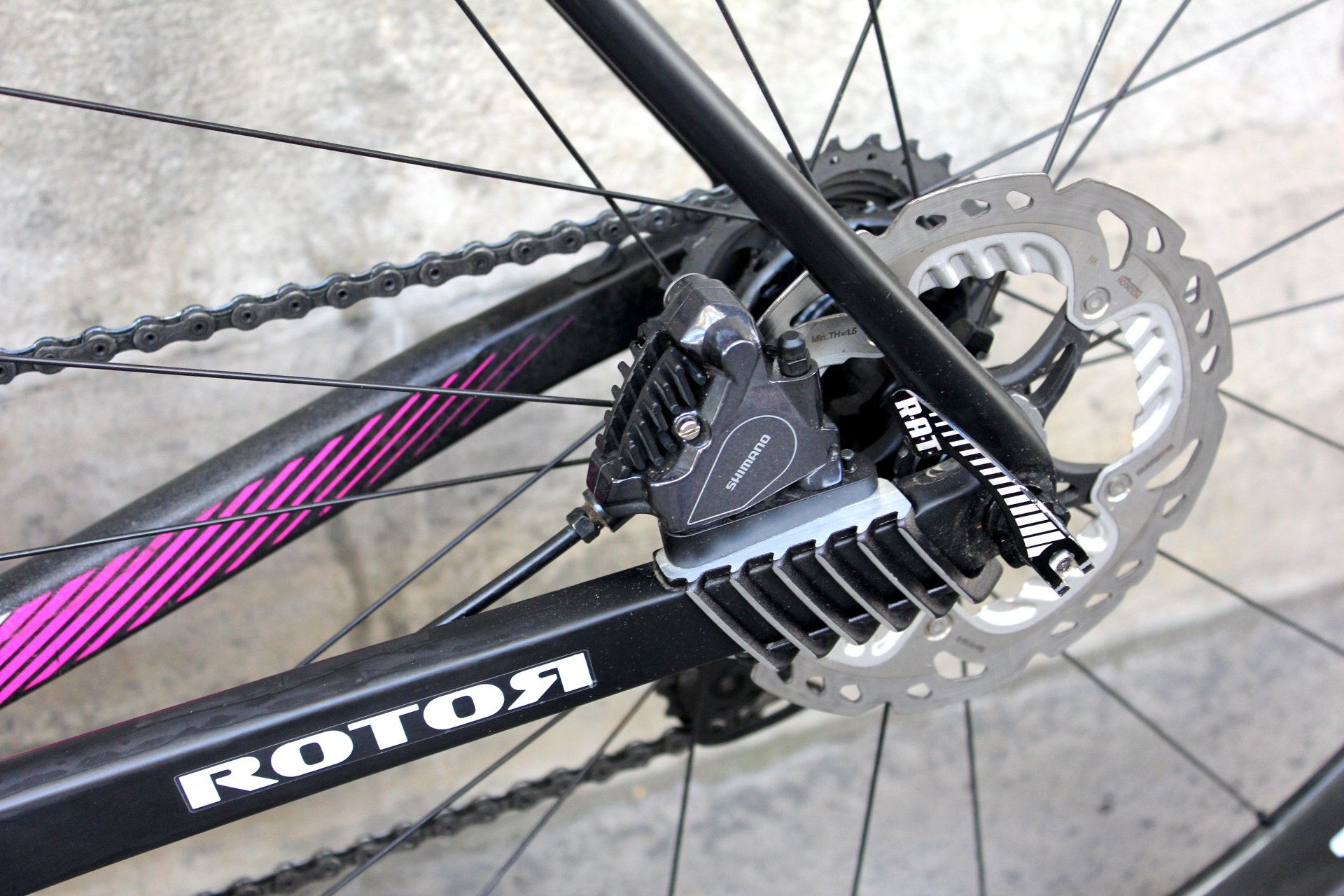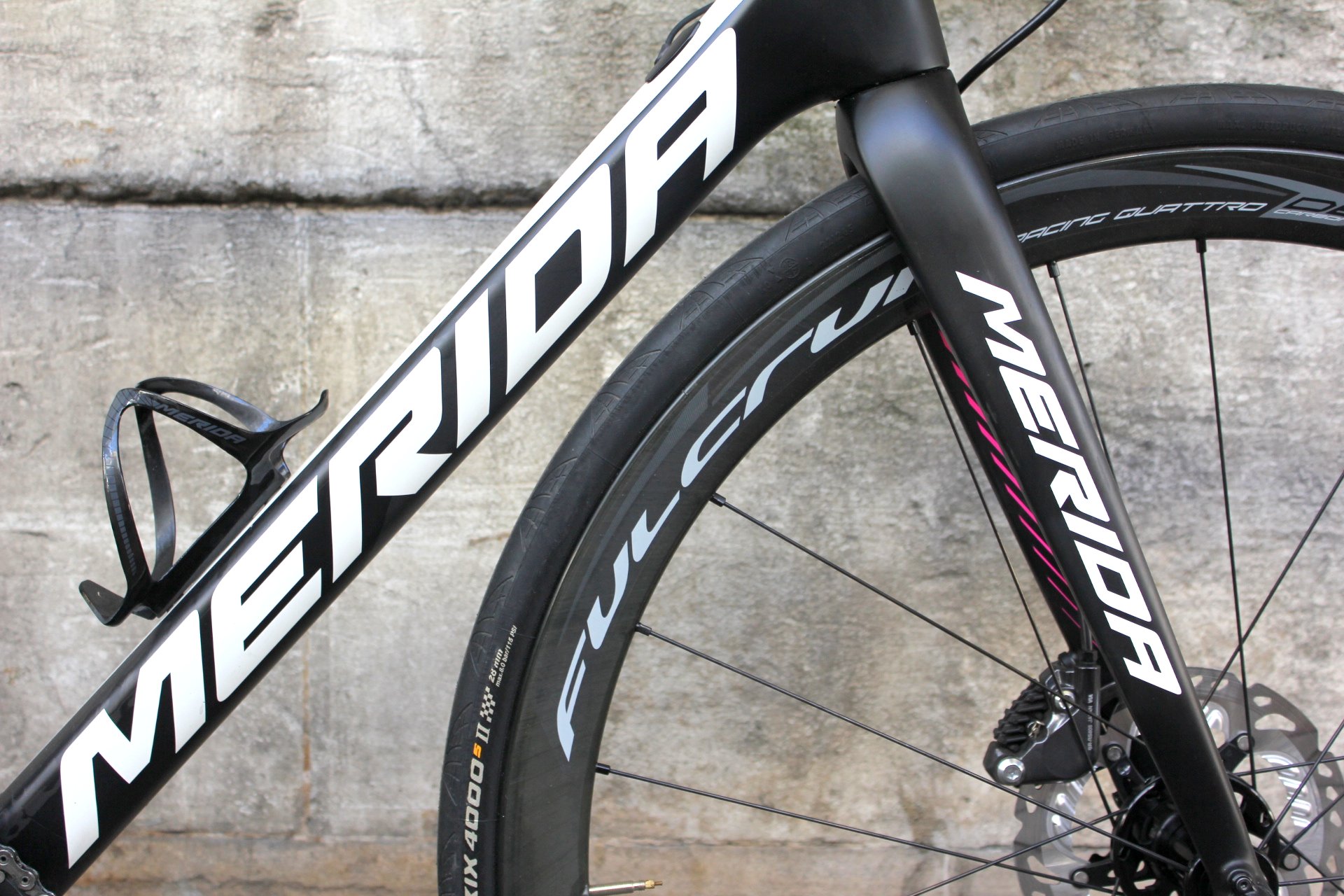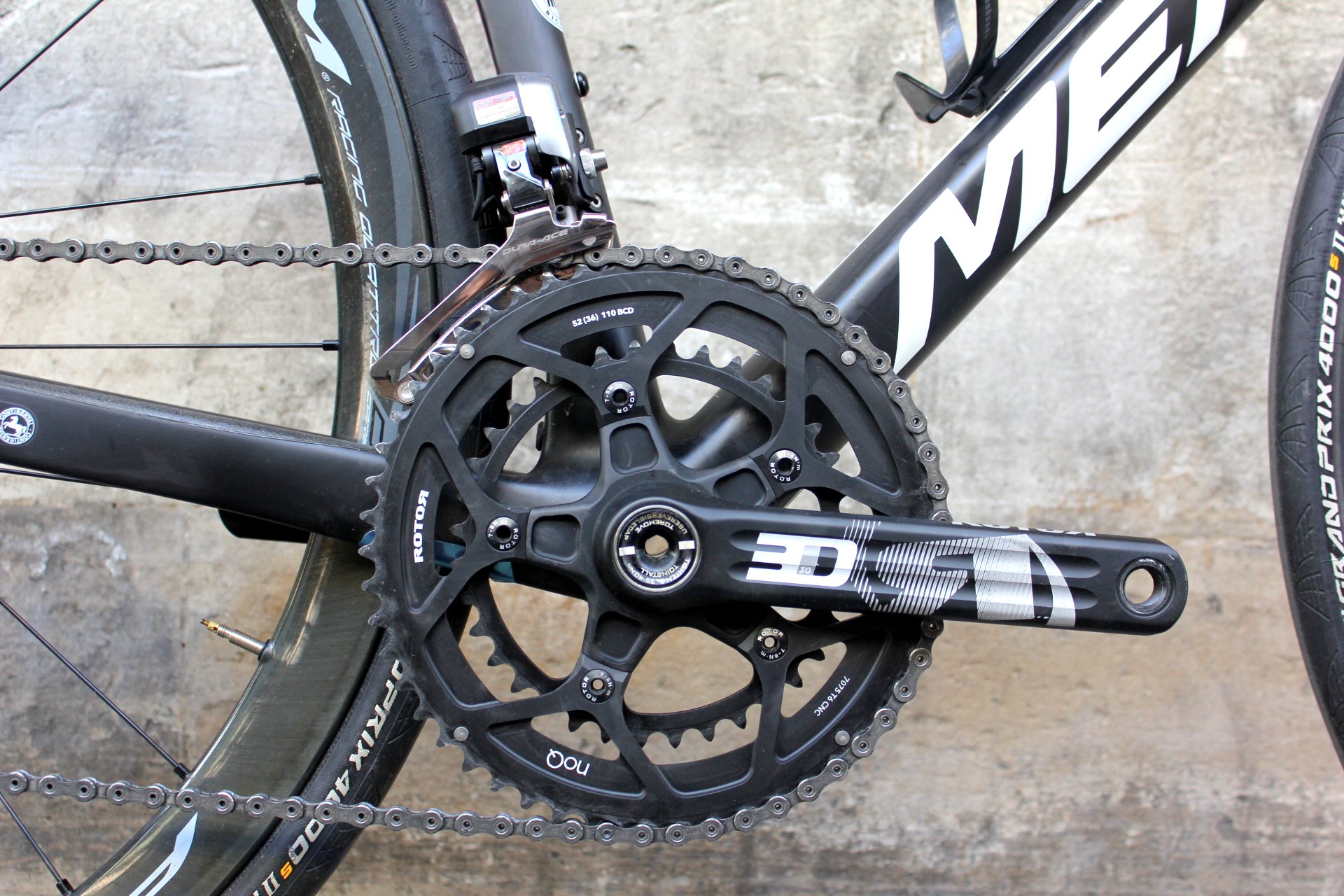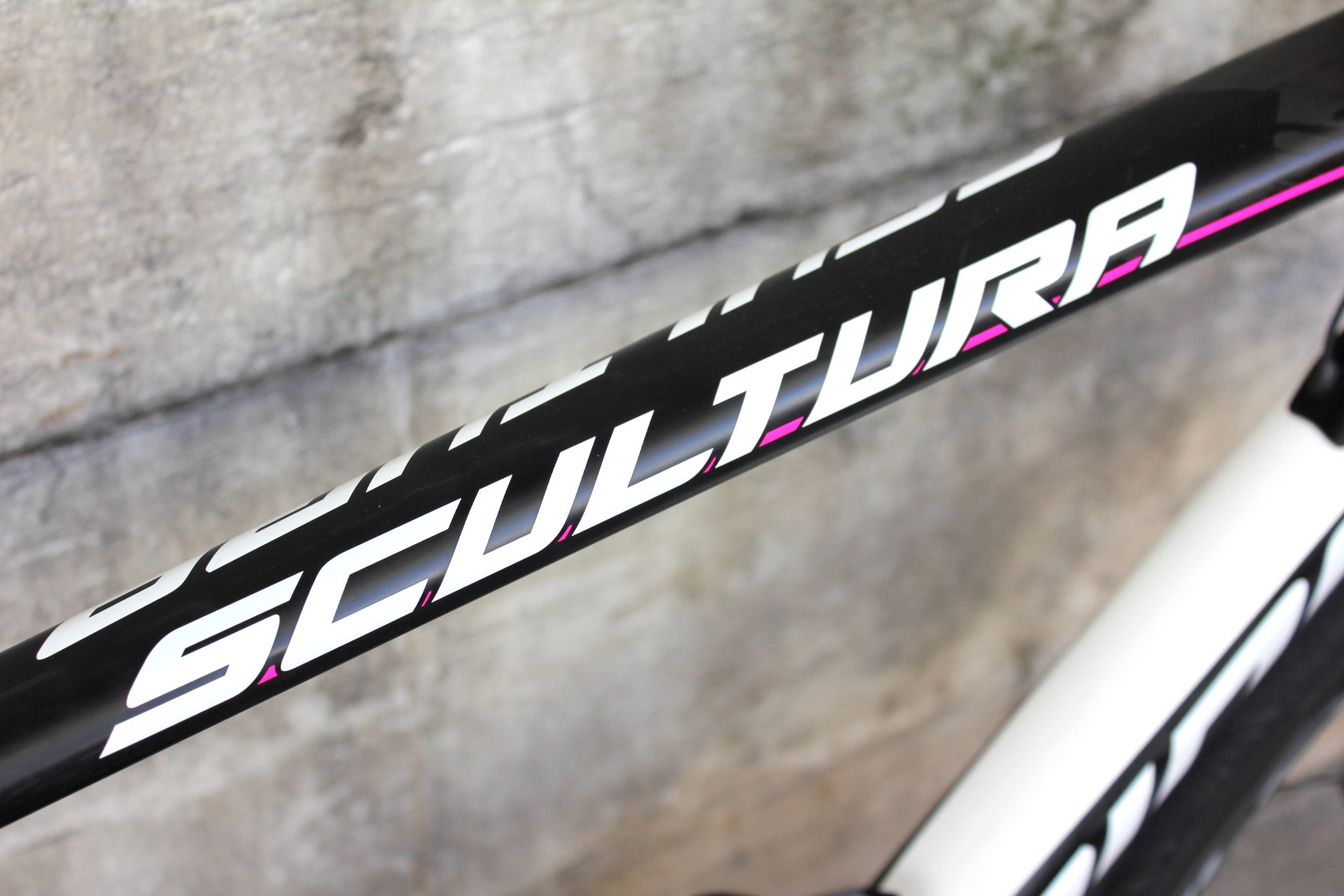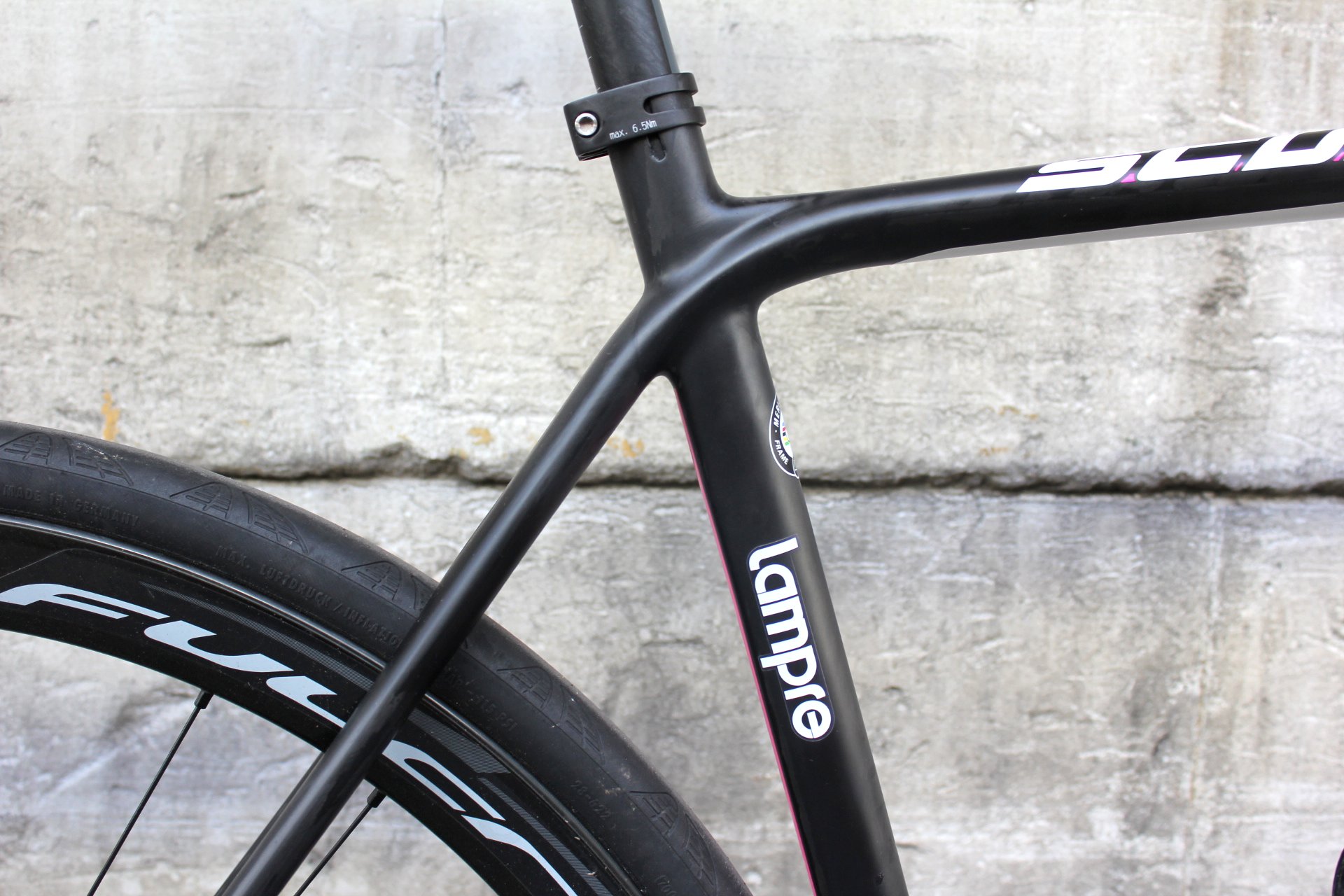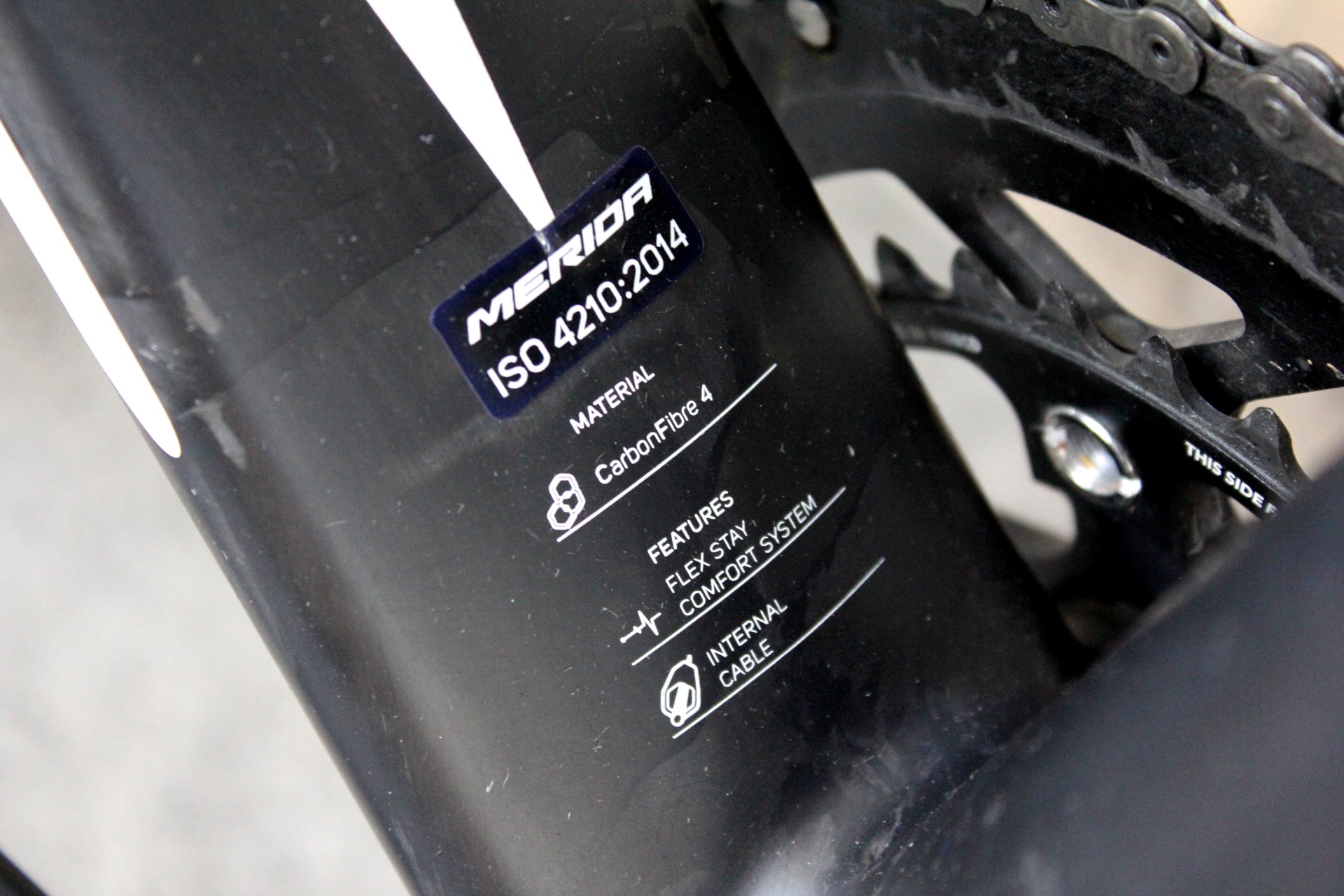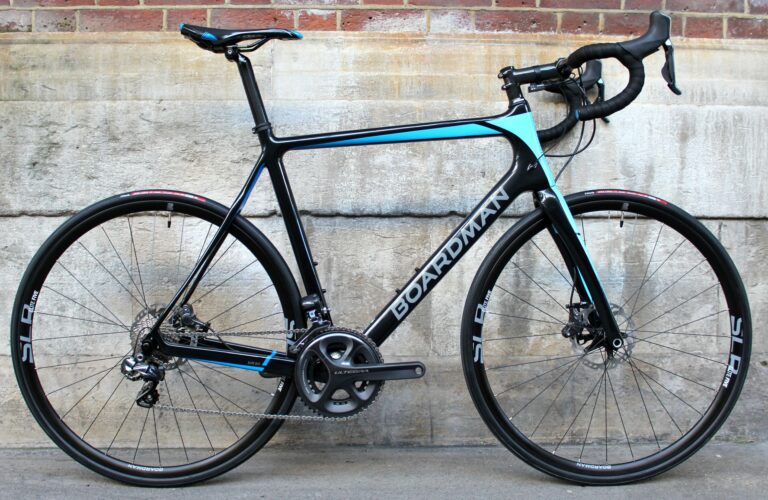The Merida Scultura Disc Team delivers the grin-inducing ride you’d expect from a WorldTour-ready bike – thanks to the stiff, responsive frame, seductively smooth ride quality, and fast but neutral handling – but with the assured, all-weather performance of disc brakes. It’s a winning formula fit for 2017.
While disc brakes have been appearing on endurance bikes for a few years now, Merida were among the first to push disc brakes into the pro peloton. The Scultura Disc was launched in April 2016 and was used by the Lampre-Merida team in the season’s big cobbled Classics: the Tour of Flanders and Paris-Roubaix.
Of course, disc brakes were subsequently banned from the pro peloton after The Hell of the North, but the UCI has re-started its trial. And while Lampre-Merida were one of the few teams to truly test disc brakes last season, the tide has begun to turn, with both Marcel Kittel and Tom Boonen winning races on disc-equipped bikes in January 2017.
